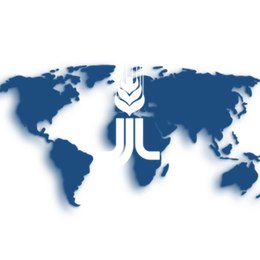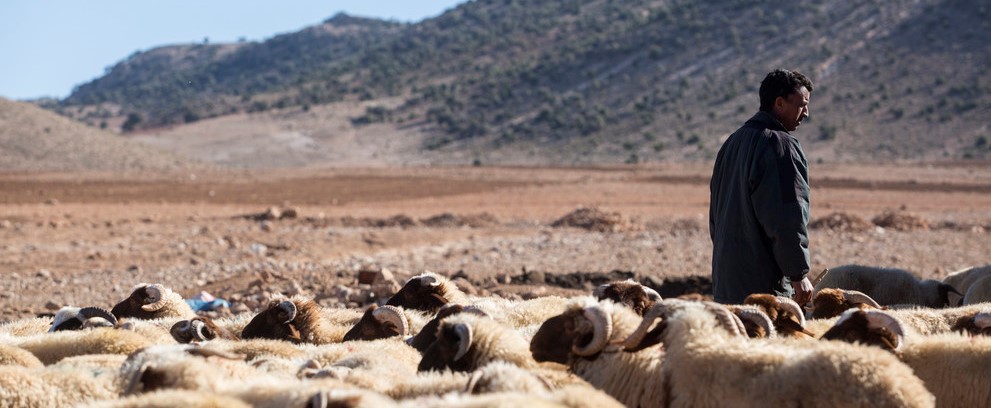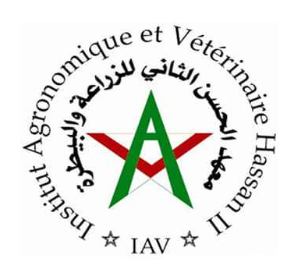Drought vulnerability assessment and mapping
“The drought vulnerability index (DVI) can detect the differences in vulnerability in different rural communes, thus providing a tool for more effective drought management practices”
Yasmina Imani, Professor at IAV Hassan IIBACKGROUND
Poor understanding of the drivers of drought vulnerabilities explains the lack of proactive drought management. With the composite vulnerability index, decision makers can tailor drought management strategies to each specific local situation.
WHAT’S INVOLVED
Assessing drought vulnerability
By using the drought vulnerability index, decision makers can identify and understand the main drivers (natural, social, technological and economic) of drought vulnerability in rural areas and develop mitigation strategies adapted to each local situation. For example, decision makers can focus drought mitigation strategies on crop diversification by introducing crops with low water needs and replacing cereals with drought-resistant fruit tree species such as olive, fig, carob and pomegranate.
EXPLORE THIS SOLUTION
The drought vulnerability index can:
- Facilitate an efficient transition to a risk management approach for drought
- Enhance rural people’s resilience to droughts and climate change

Countries involved
Morocco
Project partners
Moroccan Ministry of Agriculture
Project dates
2011-2013
Share this solution
Bookmark this solution
BookmarkShow Full Solution
Summary
Drought vulnerability was assessed at the community level through a composite vulnerability index (DVI) that incorporated each community’s renewable resource potential, economic capacity, human and civic resources, and infrastructure and technology. The DVI identified the main drivers of drought vulnerability and provided a tool for more effective and tailored drought management practices in rural communities.
Challenge/Problem
Although Morocco’s climates are diverse, the country has a high degree of aridity and is extremely vulnerable to drought. Because Morocco’s annual rainfall is highly variable and generally low, drought represents a structural recurrent phenomenon. The severe and recurrent droughts of the last 40 years have led the government to spend tremendous amounts of public funds on relief and crisis management, whereas proactive risk management approaches need to be encouraged and favored.
In Morocco, nearly 50 per cent of the population lives in rural areas. These rural people are mostly small subsistence farmers whose production depends almost entirely on rainfall. As a result, farmers are very sensitive to drought episodes, which may dramatically affect their incomes. Even though the Moroccan government adopted a risk management approach to drought in the late ‘90s as a consequence of the increasing frequency, length and severity of drought episodes, drought management remains in practice mainly reactive and often ineffective. The ineffectiveness of public policy is in part a consequence of the poor understanding of drought vulnerability at the rural community level, which prevents the development of efficient mitigation actions and adaptation strategies tailored to the needs and specific circumstances of each rural community.
Solution
The aim of the drought vulnerability assessment and mapping project was to use agricultural, social and economic data to calculate a community-level composite drought vulnerability index (DVI). The project took place in the Oum Er-Rbia basin, which is home to a wide variety of climates, landscapes, cropping systems and social habits.
The DVI takes into consideration four different variables for each specific community: its renewable resource potential, its economic capacity, its human and civic resources, and its infrastructure and technology. Each component includes a set of selected variables, chosen for their relevance to the local context.
Data gathered for the DVI include information on rainfall, agricultural and land statuses, adult illiteracy rates, access to water for drinking and irrigation, poverty levels and age. National partners included the National Department of Statistics and the Oum Er Rbia River Basin Agency. International partners included members of the DEWFORA (Drought Early Warning Forecasting) project from the Polytechnic University of Madrid and the European Joint Research Center, who contributed to developing the methodology and computing the DVI.
The DVI is calculated by selecting relevant variables, normalizing the variables with respect to a common baseline and combining sub-component variables within each category by weighted averages. The DVI is the weighted average of the components, with scores ranging from 0 to 1.
The DVI was then used to generate a drought vulnerability map of the basin and contributed to the understanding of the underlying factors of drought vulnerability among rural populations. It also helped provide decision makers and water resources managers with a tool for efficient drought mitigation tailored to the needs and circumstances of each rural community.
Results
The drought vulnerability maps that were derived from the DVI show that most of the Oum er Rbia basin is highly vulnerable to drought.
The mountainous areas present the most favorable annual rainfall, which helps explain their low DVI. In the provinces that present the highest vulnerability to drought, areas with lower vulnerability correspond to large irrigated perimeters. Overall, the main output of this study was to show how the DVI can detect differences in vulnerability among different rural communities, thus providing a more effective tool for drought management practices.
The analysis of the four dimensions of the DVI showed that at the river basin level, the major predictors of drought vulnerability were:
-mean annual rainfall
-the percentage of irrigated lands
-the ratio of cereal/fruit trees and market crops
-land status
-farm sizes
-adult literacy rates
-access to improved drinking water.
These factors may therefore be prioritized by mitigation and adaptation actions.
Lessons Learned/Potential for replication
Overall, the main outputs of this study were to test and implement newly developed drought vulnerability assessment methods. The project enabled the global capture of drought vulnerability in the basin and assessment of data needs. It can be replicated in other Moroccan basins or any other rural area, the only hampering issues being the selection of appropriate indicators and data availability. Nevertheless, experience has shown that the obtained DVI can be improved by integrating other indicators. Indeed, in order to have a more complete understanding of drought vulnerability in the basin, other indicators such as the area under insurance should be integrated. Other factors that should be considered include improved techniques for soil preparation and management; improved crop planting, planning and production methods; the use of more resistant strains of seeds; and animals selected for increased production of eggs, meat and honey.
Next Steps
In order to have a more complete assessment of drought vulnerability in the basin, qualitative studies can include a participative approach dimension for individuals and communities. For example, in the Oum Er Rbia basin, irrigated and rainfed farming often overlap. In that case, under drought situations, farmers may move their livestock from rainfed areas to irrigated ones and are therefore less vulnerable to drought. The gender approach should also be considered since in many parts of the basin, women’s cooperatives represent a major source of income. The particular customs and traditions of rural communities should also be considered.
Solution Video
Solution Document Downloads
Solution Additional Resources
E-course: Drought forecasting and warning: Principles and applicationsLast update: 11/10/2022



